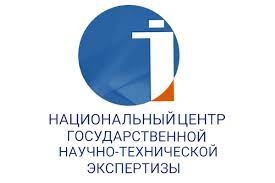TRANSLATION OF M. ZHUMABAYEV'S POEM “HOMELAND”: LINGUISTIC AND CULTURAL ASPECTS
https://doi.org/10.55491/2411-6076-2024-4-177-186
Abstract
This article examines the artistic and expressive elements of M. Zhumabayev's poem “Homeland” and their translations into Russian and Turkish from both linguistic and cultural perspectives. Artistic and expressive elements are crucial for the 'embellishment' of any literary work, encapsulating the author's distinctive style. These elements, whether explicitly or implicitly meaningful, hold significant potential for impacting the reader, posing a substantial challenge for translators aiming to maintain the original's level of artistry. M. Zhumabayev's poetry is a treasured component of Kazakh literature, frequently translated into various languages worldwide. Despite this, translation quality and constructive criticism have yet to converge into systematic research. This article aims to identify the artistic and expressive means in Zhumabayev's “Homeland”, interpret their functional and cognitive roles, and conduct a comparative semantic and structural analysis of two Russian translations and two Turkish translations, highlighting differences. The research methodology is grounded in contemporary translation studies. Through this analysis, the article examines the translation methods and strategies employed in rendering the poem from Kazakh into Russian and Turkish, assesses their impact on the original work, explores the pros and cons of each approach, and considers how the translator's gender identity might influence the translation. Finally, it articulates general principles of poetic translation.
About the Authors
A. AlpysbayevaKazakhstan
Аigul Alpysbayeva, Corresponding author, Doctor of Philosophy (PhD)
Almaty
S. Ashymkhanova
Kazakhstan
Svetlana Ashymkhanova, Doctor of Philological Sciences, Professor
Almaty
Ch. Korten
Poland
Christopher Korten, Doctor of Philosophy (PhD), Professor
Poznan
References
1. Ali, M., Saleh, A. (2018) A conceptual framework for translating deictic expressions in literary texts. Journal of Tikrit University for Humanities, 25(12), P. 1-13. https://doi.org/10.25130/jtuh.25.12.2018.26
2. Al-Kadery, S. (2024) Translation of poetry: a study of translatability of pragmatic and cultural elements. World Journal of English Language, 14(4), P. 276-283. https://doi.org/10.5430/wjel.v14n4p276
3. l-Hameed, A. (2022) Translating cultural references: a cognitive approach to literary translation. Cdelt Occasional Papers in the Development of English Education, 78(1), P. 107-134. https://doi.org/10.21608/opde.2022.249933
4. Haroon, H. (2022) Exploring the translation of non-verbal behaviour in fiction into malay. Gema Online Journal of Language Studies, 22(1). https://www.researchgate.net/publication/358912781_Exploring_the_Translation_of_Nonverbal_Behaviour_in_Fiction_into_Malay
5. Karagulova, B., Muhtarova, S., Koilybaeva, R. (2024) Audarmadagy soz tangdau (transformacia) maselesi. Tiltanym. No. 2. B. 140-149. [Karagulova, B., Mukhtarova, S., Koilybayeva, R. (2024) Transformation issues in translation. Tiltanym. No. 2. P. 140-149.] https://doi.org/10.55491/2411-6076-2024-2-140-149 (in Kazakh)
6. Madkour, M. (2016) Linguistic levels of translation: a generic exploration of translation difficulties in literary textual corpus. International Journal of Applied Linguistics & English Literature, 5(6). doi:10.7575/aiac.ijalel.v.5n.6p.99
7. Mityagina, V., Volkova, I. (2019) Localization in translation theory and practice: historical and cultural view (the case of fiction adaptation). SHS Web of Conferences, 69, 00129. https://doi.org/10.1051/shsconf/20196900129
8. Ozymai, I., Demydenko, O. (2020) Semantic and functional features of translation of English military terms in fiction. Young Scientist, 10(86). https://doi.org/10.32839/2304-5809/2020-10-86-98
9. Sabrina, A. (2023) The aesthetic-poetic translation analysis on toetyheraty’s poetry entitled ‘the moon is high’. Metathesis Journal of English Language Literature and Teaching, 7(2). P. 186-197.
10. Tamir, F. (1993) Mağcan Cumabayulı’nın şiirleri. Türkiye Türkçesine aktaran. Ankara, 338 s. [Tamir, F. (1993) Poems of M. Zhumabayev. Translation into Turkish. Ankara, 338 s.] (in Turkish)
11. Zhumabaev, M. (2006) Stihi, proza i literaturnye issledovanija. Petropavlovsk, 321 s. [Zhumabayev, M. (2006) Poems, prose and literary studies. Petropavlovsk, 321 p.] (in Russian)
12. Zhumabaev, M. (2010) Prorok. Stihi, pojemy, rasskaz. Astana: Audarma, 368 s. [Zhumabayev, M. (2010) Prophet. Poems, prose. Astana: Audarma, 368 p.] (in Russian)
Review
For citations:
Alpysbayeva A., Ashymkhanova S., Korten Ch. TRANSLATION OF M. ZHUMABAYEV'S POEM “HOMELAND”: LINGUISTIC AND CULTURAL ASPECTS. Tiltanym. 2024;96(4):177-186. https://doi.org/10.55491/2411-6076-2024-4-177-186

















